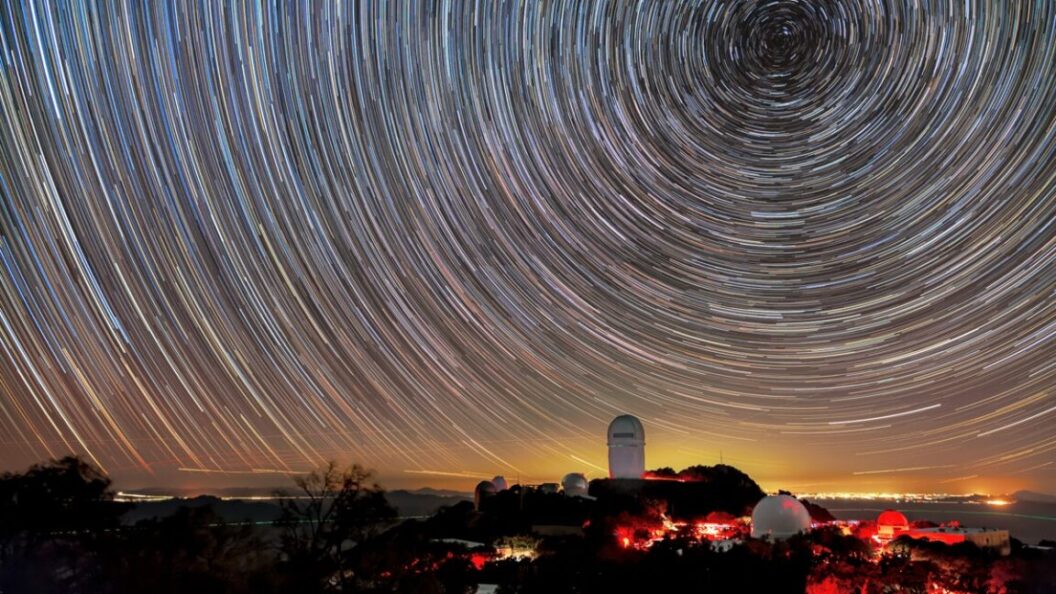Dark Energy and the Universe’s Expansion: Insights from DESI
In a groundbreaking study, scientists have leveraged advanced technology to refine our understanding of the Universe’s expansion and the enigmatic nature of dark energy. The Dark Energy Spectroscopic Instrument (DESI), equipped with cutting-edge capabilities, plays a pivotal role in investigating cosmic structures known as baryon acoustic oscillations (BAO). These oscillations serve as a cosmic ruler to measure distances across the Universe and to shed light on how dark energy influences its growth and expansion.
Understanding Baryon Acoustic Oscillations
In the nascent stages of the Universe, it existed as a hot and dense mixture of subatomic particles, primarily hydrogen and helium nuclei—collectively referred to as baryons. As the Universe expanded and cooled, tiny fluctuations within this ionized plasma formed a rippling pattern that ultimately crystallized into a three-dimensional layout. These ripples, termed baryon acoustic oscillations, provide a framework for understanding cosmic distances and the evolution of the Universe over billions of years.
The DESI project aims to measure these oscillations with unprecedented precision, collecting data on the apparent sizes of BAOs from galaxies and quasars spread across an astonishing 11 billion years of cosmic history. This data allows scientists to chart the Universe’s expansion rate at various epochs, offering critical insights into the effects of dark energy, which is theorized to be responsible for accelerating this expansion.
Promising Results from the First Year of Data
The findings released by DESI were based on an extensive analysis of data compiled from seven different slices of cosmic time, encompassing 450,000 quasars—the most comprehensive dataset to date. The precision achieved in measuring the most distant epochs, specifically between 8 to 11 billion years ago, reached an impressive accuracy level of 0.82 percent. While initial results aligned with the Lambda Cold Dark Matter (Lambda-CDM) model, combining this data with independent studies, including cosmic microwave background radiation (CMB) and Type Ia supernova observations, revealed subtle disparities regarding the behaviors of dark energy.
An Upward Trend: Analyzing Dark Energy’s Strength
The analysis has led researchers to a potentially significant conclusion: dark energy may be losing its potency. The confidence levels in this assertion derived from DESI’s data alongside CMB measurements hit a notable 2.6-sigma. With the addition of supernova datasets, the confidence could vary from 2.5-sigma to as high as 3.9-sigma, depending on the dataset utilized.
Will Percival, a co-spokesperson for DESI and researcher from the University of Waterloo, emphasized the need for consistency among various experiments measuring cosmic phenomena. “We want consistency,” he stated, reiterating that agreement with the Lambda-CDM model alone is not sufficiency; the fundamental parameters should also match across different measurements. “It has to be consistent with Lambda-CDM and give you the same parameters for the basic properties of that model,” he concluded.
Broader Implications for Cosmology
The implications of these findings extend beyond mere measurements; they challenge existing models of the Universe and provoke further inquiry into the nature of dark energy. Understanding whether dark energy is indeed weakening has profound implications for cosmological theories and may influence how future explorations of the Universe are conducted.
As scientists continue to collaborate and gather more data, the quest to unlock the mysteries of dark energy and cosmic expansion remains at the forefront of astrophysical research. DESI’s advancements may pave the way for a deeper comprehension of our Universe, revealing not just its history, but its ultimate fate. The significance of this research is immense, as it holds the potential to reshape our understanding of fundamental cosmic principles, influencing both theoretical and observational astrophysics for years to come.









